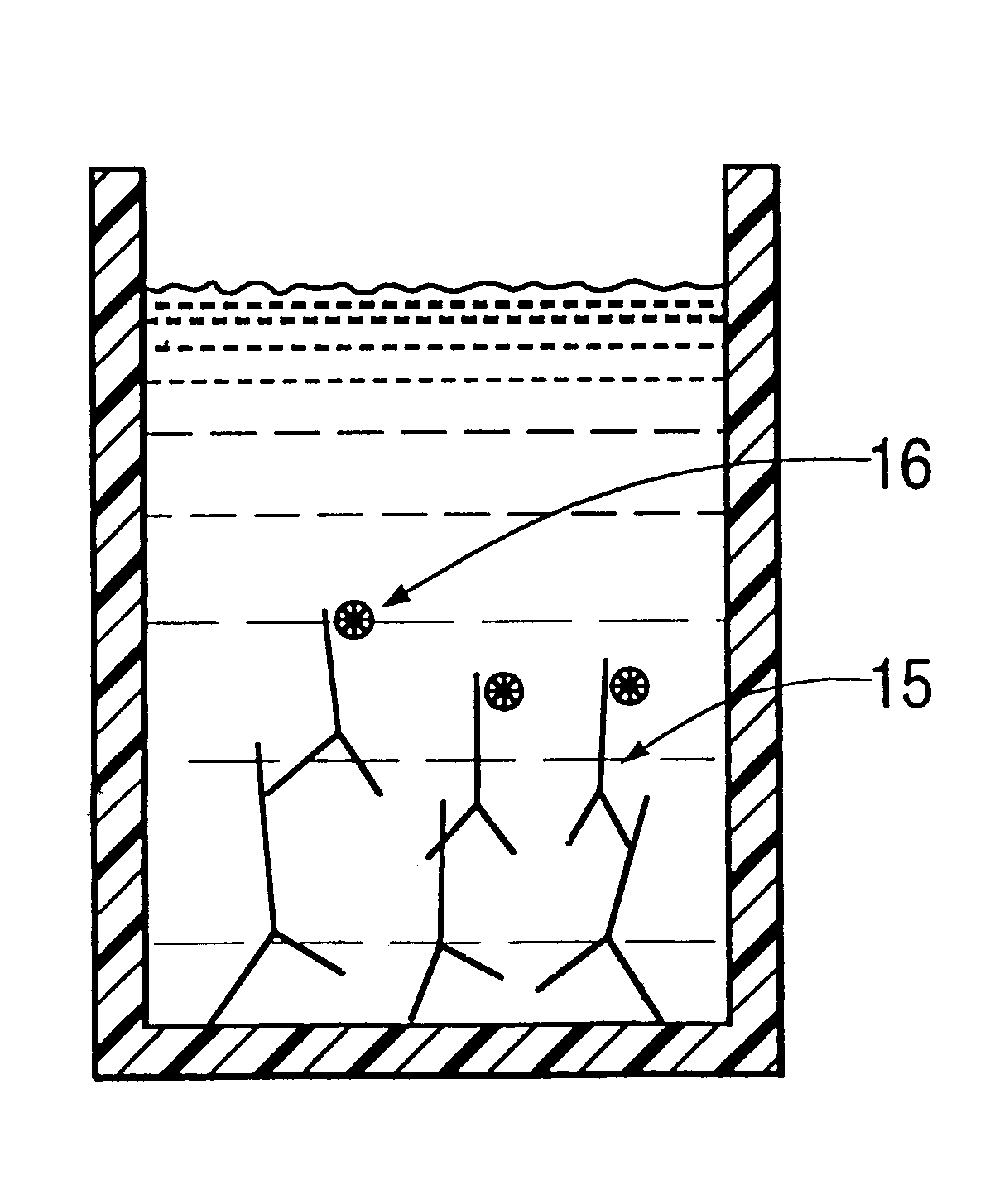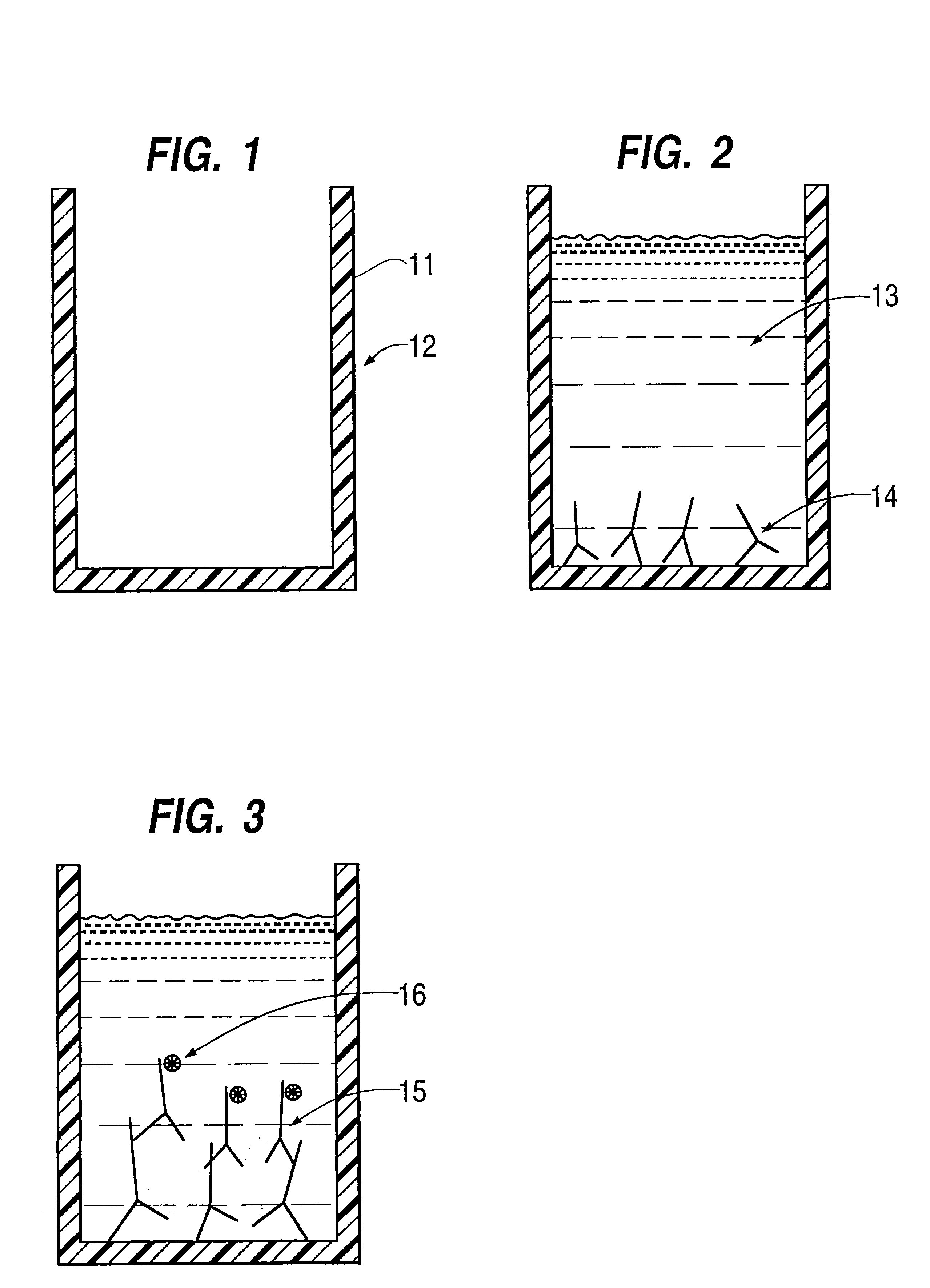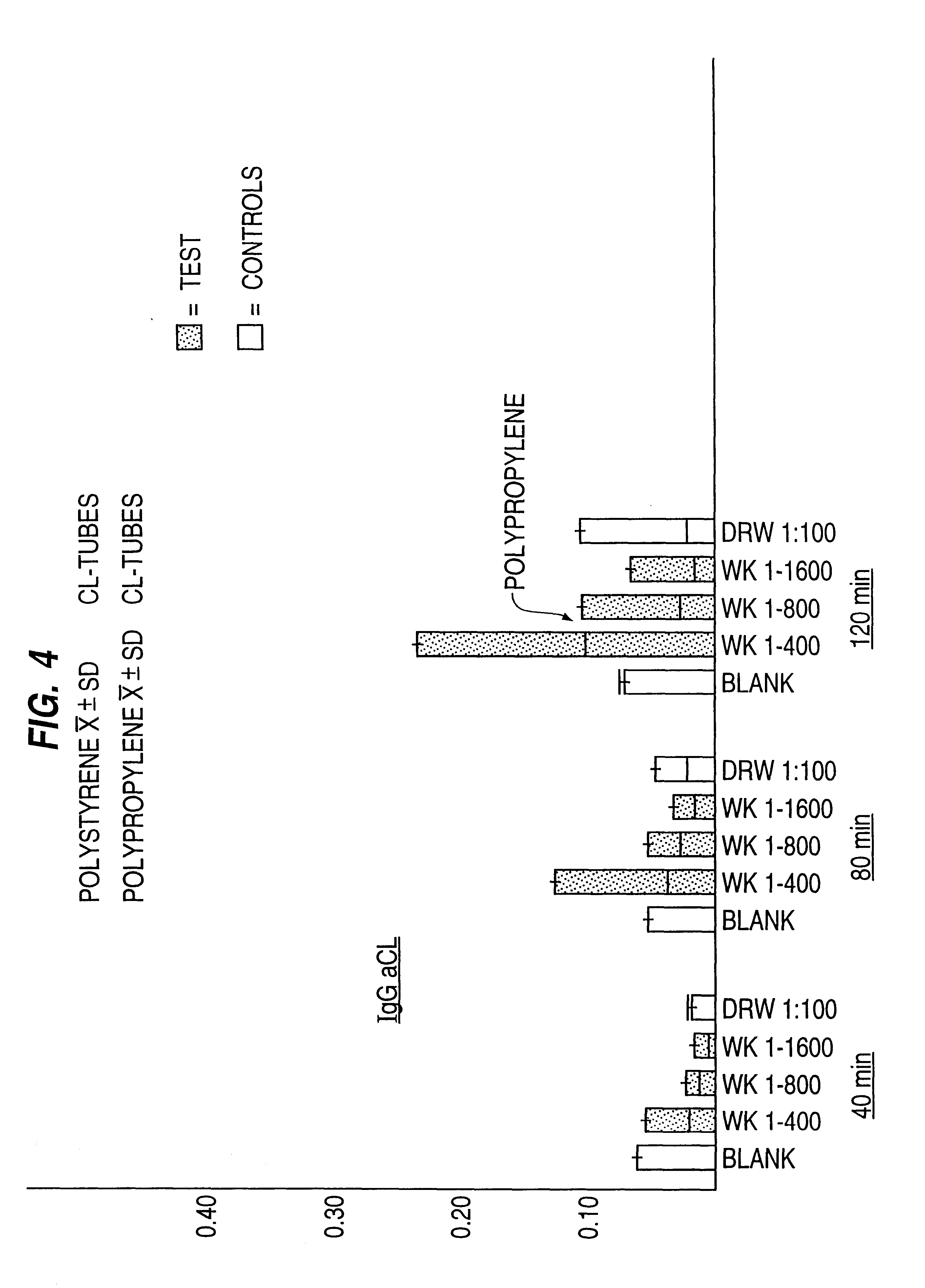Antigens embedded in thermoplastic
a technology of antigens and thermoplastics, applied in the field of immunoassays, can solve the problems of difficult control of the blocking step, reproducibility, sensitivity and quantification of patient blood, and the use of immunoassays
- Summary
- Abstract
- Description
- Claims
- Application Information
AI Technical Summary
Benefits of technology
Problems solved by technology
Method used
Image
Examples
example 2
The tubes produced in Example 1 were then blocked by incubating a 10% bovine serum albumin solution in the tubes for one hour at room temperature. The blocked tubes were tested to ascertain if the cardiolipin retained its antigenic and plasma protein binding properties and functioned normally under conditions suitable for an ELISA. Liquid serum samples known to contain aPA and liquid serum samples known not to contain aPA were diluted 1:20, 1:50, 1:100 and 1:400 and added to different tubes and conditions adjusted to permit antibody-antigen binding for 40, 80 and 120 minutes. The liquid was decanted from the tube and the inside of the tubes was gently washed four times to remove any unbound antibody. An enzyme (alkaline phosphatase or horseradish peroxidase) labeled goat or monoclonal mouse antibody directed to human IgG, A or M was added to the tube and allowed to bind to any human antibodies present for one hour. The labeled antibody was then decanted from the tube and the inside ...
example 3
50 cc tubes of polypropylene containing cardiolipin antigen were also prepared by the same manner as in Example 1 except for substituting polypropylene for polystyrene. The polypropylene containing tubes were then used in an ELISA using the same techniques and reagents as in Example 2. While the results were inferior to those using polystyrene, the assay was successful at qualitative and quantitative detection of aPA in serum samples.
example 4
After performing the immunoassay of Example 2 or 3, the antibody contents of the tubes were stripped by washing in a 2.5 pH buffer. The cardiolipin impregnated tubes were then reused and the results were essentially the same. Even after use for the third time, the variation was less than 5% from the data obtained using virgin tubes. Thus the antigenic properties of the PL were not affected by the manufacturing of the plastic ware and subsequent stripping of antibodies.
PUM
 Login to View More
Login to View More Abstract
Description
Claims
Application Information
 Login to View More
Login to View More - R&D
- Intellectual Property
- Life Sciences
- Materials
- Tech Scout
- Unparalleled Data Quality
- Higher Quality Content
- 60% Fewer Hallucinations
Browse by: Latest US Patents, China's latest patents, Technical Efficacy Thesaurus, Application Domain, Technology Topic, Popular Technical Reports.
© 2025 PatSnap. All rights reserved.Legal|Privacy policy|Modern Slavery Act Transparency Statement|Sitemap|About US| Contact US: help@patsnap.com



